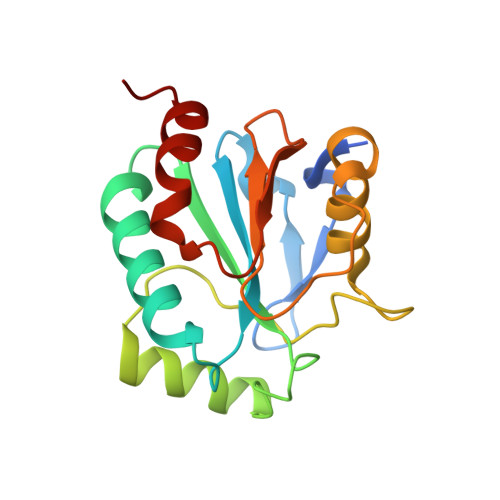Crystal Structures of a Poplar Thioredoxin Peroxidase that Exhibits the Structure of Glutathione Peroxidases: Insights into Redox-driven Conformational Changes.
Koh, C.S., Didierjean, C., Navrot, N., Panjikar, S., Mulliert, G., Rouhier, N., Jacquot, J.P., Aubry, A., Shawkataly, O., Corbier, C.(2007) J Mol Biology 370: 512-529
- PubMed: 17531267
- DOI: https://doi.org/10.1016/j.jmb.2007.04.031
- Primary Citation of Related Structures:
2P5Q, 2P5R - PubMed Abstract:
Glutathione peroxidases (GPXs) are a group of enzymes that regulate the levels of reactive oxygen species in cells and tissues, and protect them against oxidative damage. Contrary to most of their counterparts in animal cells, the higher plant GPX homologues identified so far possess cysteine instead of selenocysteine in their active site. Interestingly, the plant GPXs are not dependent on glutathione but rather on thioredoxin as their in vitro electron donor. We have determined the crystal structures of the reduced and oxidized form of Populus trichocarpaxdeltoides GPX5 (PtGPX5), using a selenomethionine derivative. PtGPX5 exhibits an overall structure similar to that of the known animal GPXs. PtGPX5 crystallized in the assumed physiological dimeric form, displaying a pseudo ten-stranded beta sheet core. Comparison of both redox structures indicates that a drastic conformational change is necessary to bring the two distant cysteine residues together to form an intramolecular disulfide bond. In addition, a computer model of a complex of PtGPX5 and its in vitro recycling partner thioredoxin h1 is proposed on the basis of the crystal packing of the oxidized form enzyme. A possible role of PtGPX5 as a heavy-metal sink is also discussed.
Organizational Affiliation:
LCM3B, Equipe Biocristallographie, UMR 7036 CNRS-UHP, Faculté des Sciences et Techniques, Nancy Université, BP 239, 54506 Vandoeuvre-lès-Nancy, France.



















